Thank you to our Orange Army: Floods, storms and a pandemic – it’s been a big year for our SES volunteers
It started with a flood and ended with a flood. In between there was a destructive storm and, of course, the always present danger of the pandemic. It’s been a big year for our Orange Army.
SA News
Don't miss out on the headlines from SA News. Followed categories will be added to My News.
It started with a flood and ended with a flood. In between there was a destructive storm the likes of which we rarely see in South Australia and, of course, the always present danger of the pandemic.
Then there were the floods in our eastern states, some of the worst Australia has ever seen, which drew in emergency workers from across the nation.
To say 2022 was a busy year for our State Emergency Service volunteers would be, according to deputy chief officer Liz Connell, something of an understatement.
Through it all the SES volunteers – who number more than 1600 – filled sandbags, wielded chainsaws, carried out rescues and co-ordinated emergency services without complaint.
Ms Connell said it speaks to a culture of selflessness, both within the service and our country at large where a strong culture of volunteerism underpins much of our emergency response.
“So we started the beginning of the year with flooding up around the northern part of the state around Glendambo and Kimba and the West Coast,” she said.
“There was significant damage to the Stuart Highway and the East-West rail line. There were 18 breaches which closed off both the Northern Territory and Perth, and that meant disruption to a lot of food supplies that travel on those routes.”
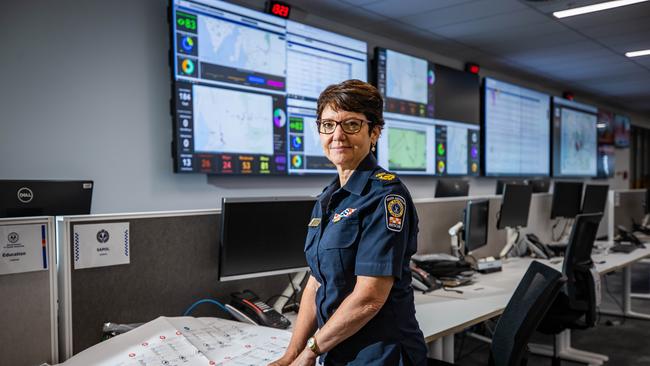
The SES were the control agency for the floods, which were named Operation Alpha, co-ordinating the emergency response and helping to ensure those in our far northern towns didn’t run out of food due to cut off supply routes.
“We also did quite a few rescues during that period of time,” Ms Connell said.
“So it’s been an exceptionally busy year for us. We’ve had about 10,000 requests and assistance and about 500 rescues in that period of time.
“We think it’s probably going to be well up there with the busiest years we’ve ever had. 2016 was another particularly busy year, and a very similar year, where front after front rolled through the state almost on a weekly basis. And it’s been it’s been like that for us, this year with back to back to back events across the state.”
And while Australia may be the driest inhabited continent on earth, it was water that kept our SES volunteers busy in 2022.
The third consecutive La Nina saw an incredible amount of rain dumped on Australia, and it was not long after the outback floods in SA that we saw the incredible east coast flooding begin.
From Brisbane and the Gold Coast, into Northern New South Wales and then Sydney, the floods seemed almost endless.
By the time the water dried up 27 people had tragically lost their lives.
“We deployed more than 100 SES people to New South Wales, but factoring in other agencies I believe we deployed more than 200 people over several deployments,” Ms Connell said.
She said 2022 was a highly unusual year in that there were two major emergencies – Operation Alpha and the Murray Floods, codenamed Operation Foxtrot – and two national emergencies in the East Coast floods and Covid.
Ms Connell said Operation Foxtrot was different to many emergency situations in that everyone knew it was coming.
“It is a different situation in terms of preparing for it in that we’ve had a longer lead time for both us and our partners like local government, who’ve done a lot of work on levees and things like that, and for communities involved,” she said.
“We have been involved in lots of flood mitigation – so that’s the levee building, filling sandbags, distributing sandbags. We’ve also had crews out monitoring the levees, and there’s the rescue component. In the last couple of days we had to enact a rescue of a number of people who found themselves clinging to a tree.”
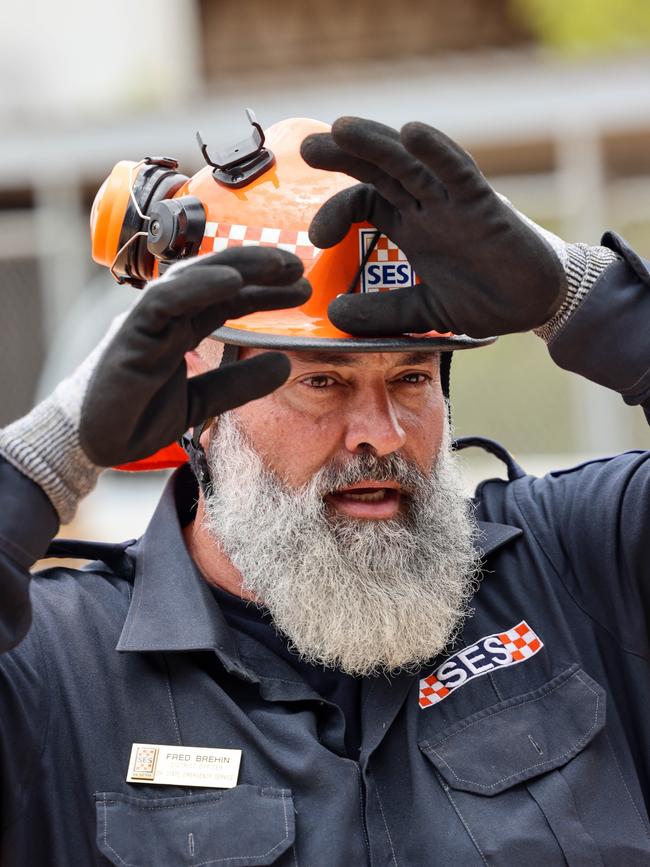
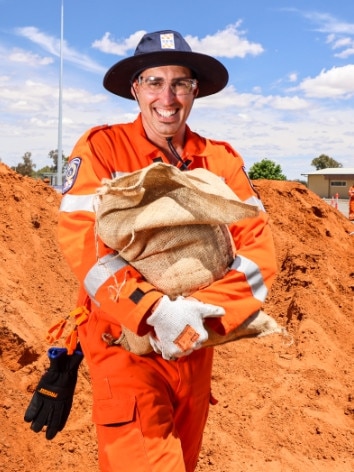
Ms Connell said the SES was always looking to expand its team of roughly 1600 volunteers, adding that there was a range of roles for anyone interested.
“There’s obviously the response activities, but there are also things like swift water rescue, there’s rescue at heights, there are communications roles,” she said.
“And it’s a great way to give back to your community. A lot of the benefits that volunteers get come from working with other volunteers and being part of that team.”
Ms Connell acknowledged that spare time was a valuable commodity in the modern world, and said the SES had adapted to recognise that fact.
“Nationally and internationally, volunteering has changed and we’ve needed to change with that,” she said.
“One of the ways that we have been able to change is how we deliver our training.
During COVID, for example, we stopped people meeting to train, and we switched and pivoted to doing quite a bit of training online so that people would be able to maintain their skills.
“So I think as time goes on we will do more and more of that sort of modification of how we used to do things.”
So what’s the first step to getting on-board?
“Jump on our website, register your interest there and someone will follow it up,” Ms Connell said.
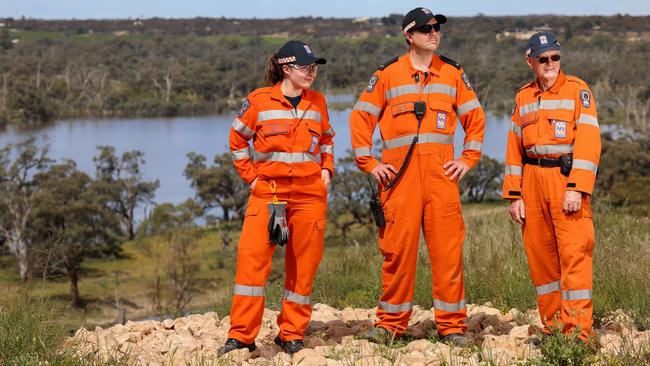
Read the stories of some of our selfless SES volunteers:
Beatrice Walladge, volunteer
When Beatrice Walladge saw the SES search dogs at the Riverland Field Days in 2018 she knew straight away that it was something she wanted to be involved with.
Within months she had trained her kelpie to be a fully operational search dog, a feat that earned her the 2020 cadet of the year award with fellow trainer Sophie Western.
Now Miss Walladge has transitioned into a more traditional rescue role and she can’t speak more highly of the experience.
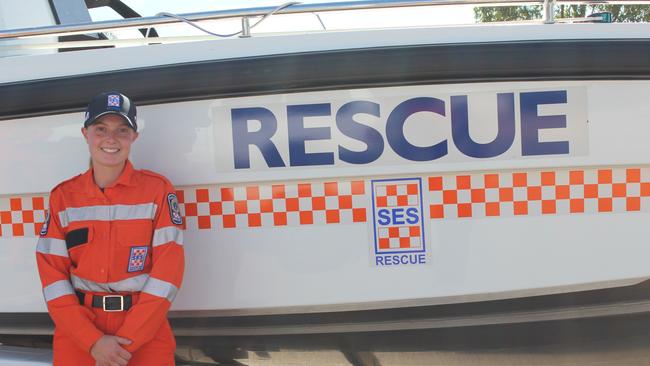
“Once I turned 18 I was able to go further into the rescue side of things – everything from road crash rescue to vertical rescue,” she says.
“Very recently I was involved in a massive vertical rescue that was one of the more complex operations I’ve taken part in. All agencies were there, and the rescue paramedics had to go over the edge of the cliff to rescue the person. Putting those really complex skills that we’ve learned to work – the knots, the lines – that was very satisfying.”
The Barmera-based volunteer says she got a lot of satisfaction out of giving back to her community.
“Every job is different and you never know what to expect,” she says.
“You’re always learning something new. Just to be able to give back to my small community and learn so many different skills, it’s incredible.”
Jono Binkowski, Sturt unit manager
When a huge storm hit Adelaide in December, carving a swath of destruction through the Hills and foothills, Jono Binkowski’s SES unit was at the forefront.
The Sturt Unit covers suburbs like Blackwood, Coromandel Valley and Stirling – the locations hit hardest by the once-in-a-decade weather event.
“We had 713 requests for assistance in that seven day period,” Mr Binkowski says.
“We’d normally get between 650 and 800 requests in a whole year. Just over 600 of those requests were for trees down, and the remainder were damage to roofs and property.”
Mr Binkowski says he found his work with the SES worthwhile and rewarding, and encouraged anyone interested to find out more.
“We’re actually pretty flexible about the time you give,” he says.
Fred Brehin, district officer for the Riverland
Fred Brehin’s volunteer record with the SES stretches back almost 30 years, but the last two years have seen him working as a staff member in the role of district officer for the Riverland.
To say 2022 has been busy, he says, is something of an understatement. If he wasn’t at a desk or on the phones working through the logistics of dealing with our largest flood event in decades he was manning a Dingo mini-excavator and moving dirt himself to help keep the region’s towns safe.
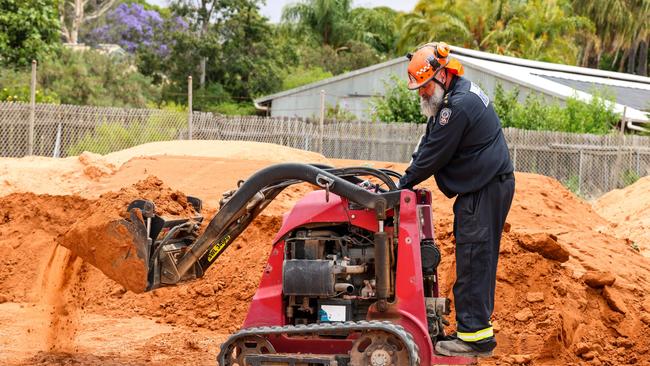
“I’ve been busy looking after all the units in the district, making sure they have everything they need to maintain their operational capabilities,” Mr Brehin says.
The three decades of service, he says, has given him an immense amount of satisfaction.
“To be able to give back to my community, the wider South Australian community and the Australian community at large has been very rewarding,” Mr Brehin says.
“I’ve been to Western Australia, Queensland and New South Wales on deployment to assist after major storms. I went twice to Far North Queensland to help after Cyclone Yasi went through.”
Andrew Kelly, Swiftwater Technician
It took hundreds of hours of training for Andrew Kelly to qualify for a role in the SES Swiftwater Rescue helicopter operations, but he says every hour was worthwhile.
A 14-year member of the service, Mr Kelly said he was looking for a new challenge and taking to the skies seemed like a logical next step.
“Initially the swiftwater stuff for me was about keeping my crew safe, as I’m one of the crew leaders at my local unit,” he says.
“Swiftwater jobs can be very high risk, so I wanted to be able to keep my people safe. But it was also about taking on challenges that, as a volunteer, you might not get the chance to do.”
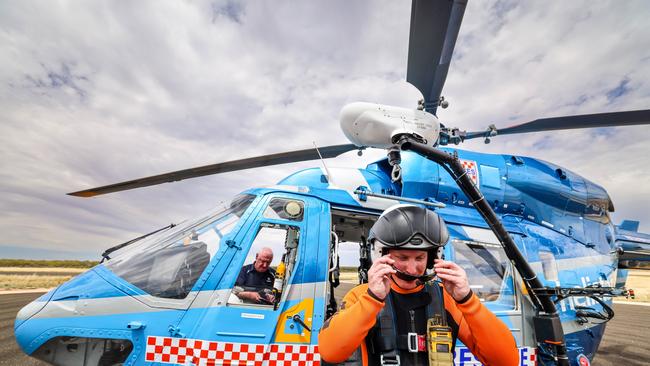
In 2022 Mr Kelly has been involved in Operation Alpha – the flood emergency in the South Australian outback, where he helped rescue a man who had been swept from the road near Parachilna – numerous interstate deployments and, of course, the current River Murray situation.
“We’re currently based at Loxton, and we’re providing rescue coverage if we need to do a winch rescue or get someone out who might have been cut off in their house, to recon work, to checking levee banks. It’s much quicker for us to get a levee than a road crew.”
Mr Kelly encouraged anyone thinking of joining the SES to have a closer look.
“You get to do things that you would never normally get the opportunity to do,” he says.
Paul De Passos, volunteer
Paul De Passos’s journey with the SES started with a visit to his local unit with his son’s Scout group.
“I thought, ‘wow, this is a great thing’,” Mr De Passos says.
“I could feel the sense of community, and I thought the whole thing was fabulous. And I thought it could be something I could do with my son when he gets older.”
In his first two months Mr De Passos says he has completed his induction training and was now working in a supporting role with his local SES.
“Everything from helping out with the storms we had in Campbelltown to providing support work for St Johns at the Valo 500, which was just an amazing experience,” he says.
Mr De Passos says the practical skills learned through the SES were second to none.
“The amount of talented people you come across is just really awesome,” he says.
“Everyone treats one another like family. The camaraderie is fantastic, and that obviously helps whenever we go out on call. There’s a real sense of belonging.”





